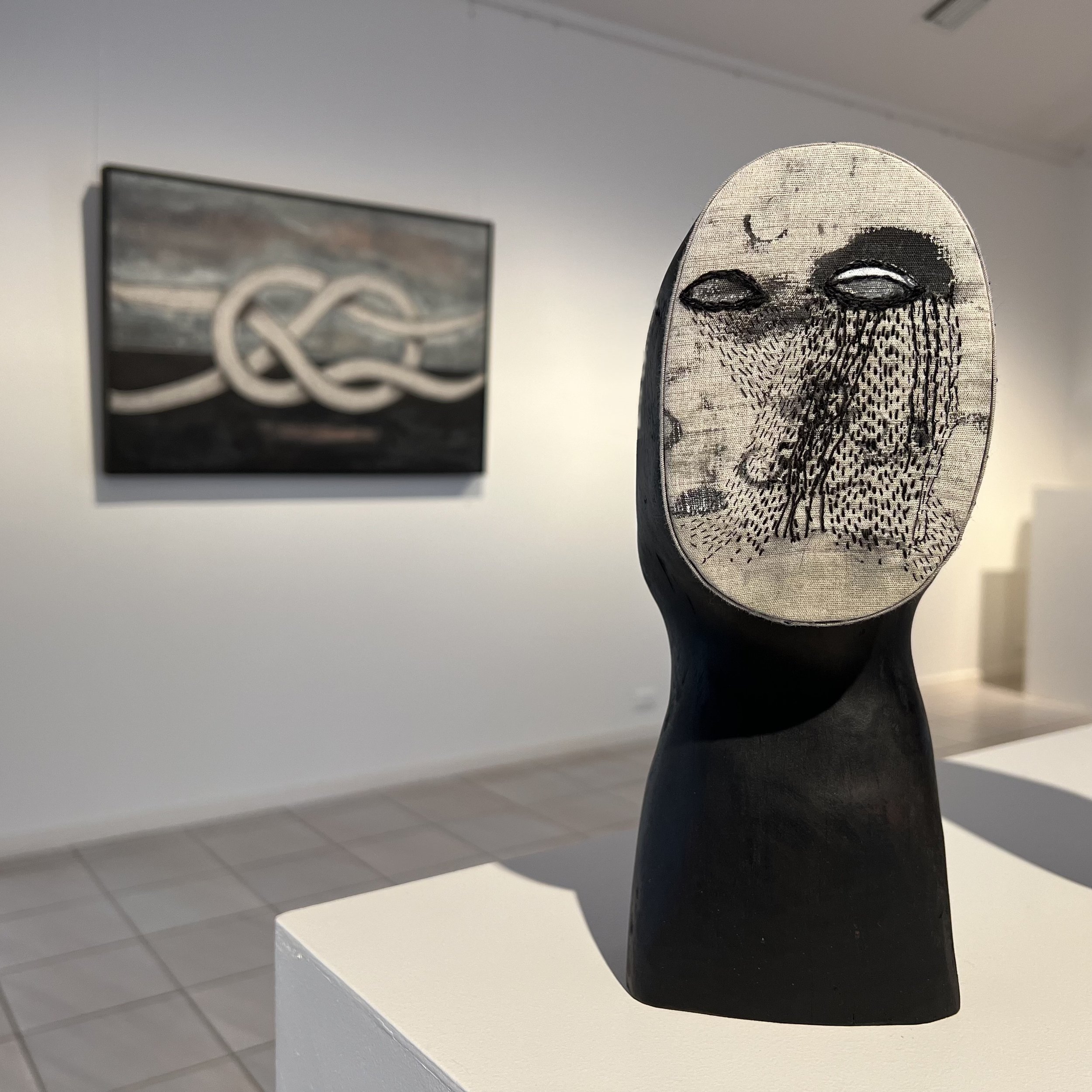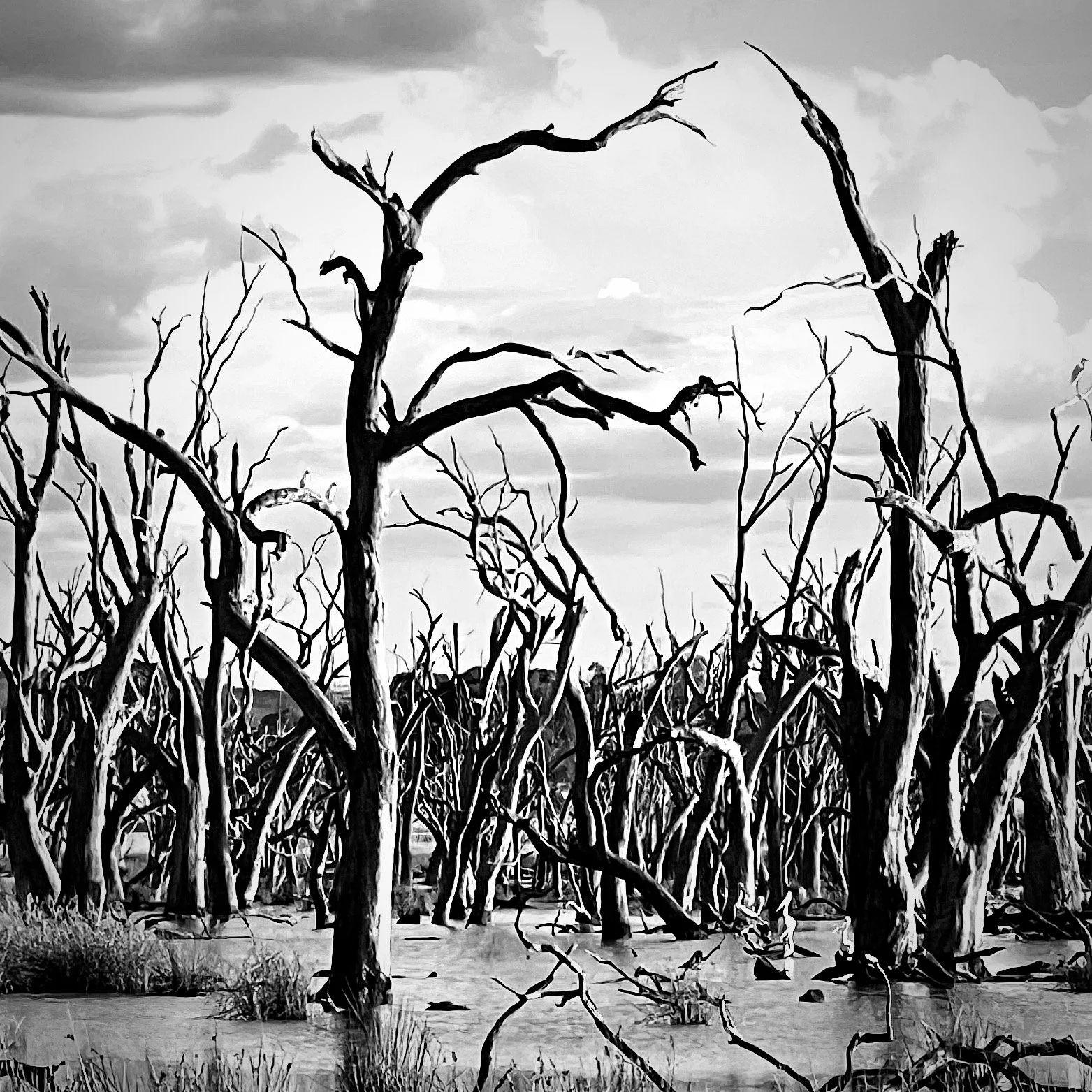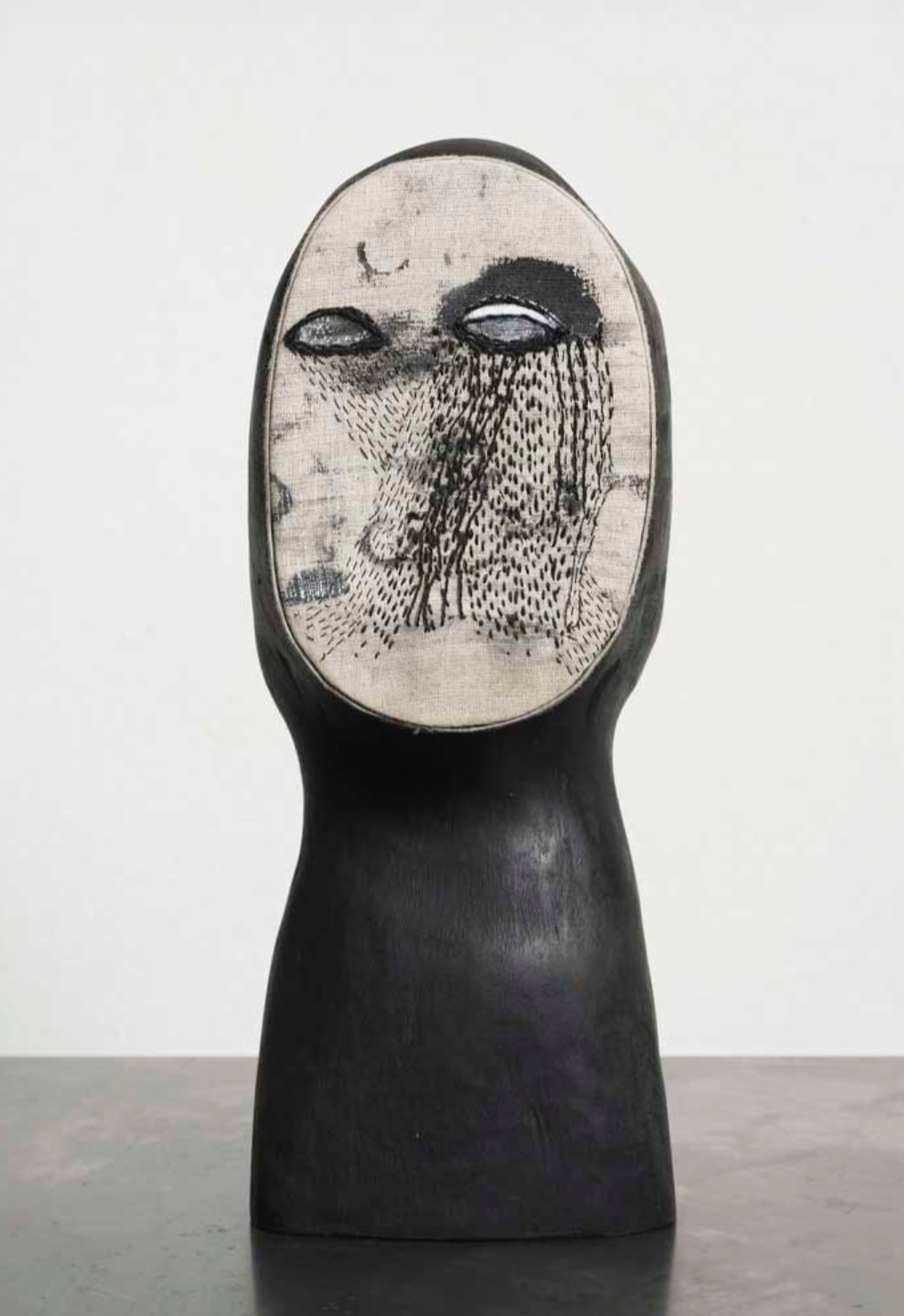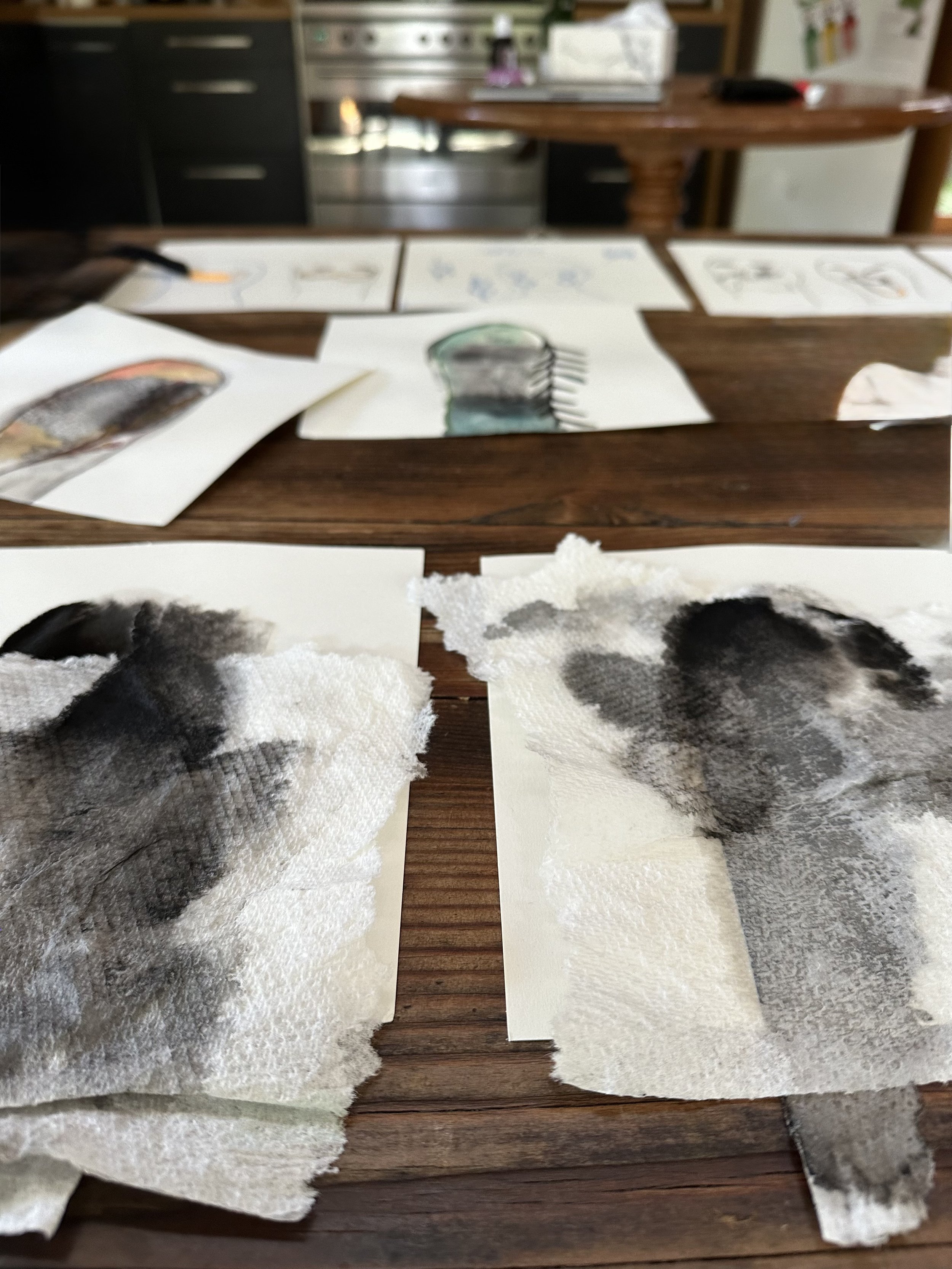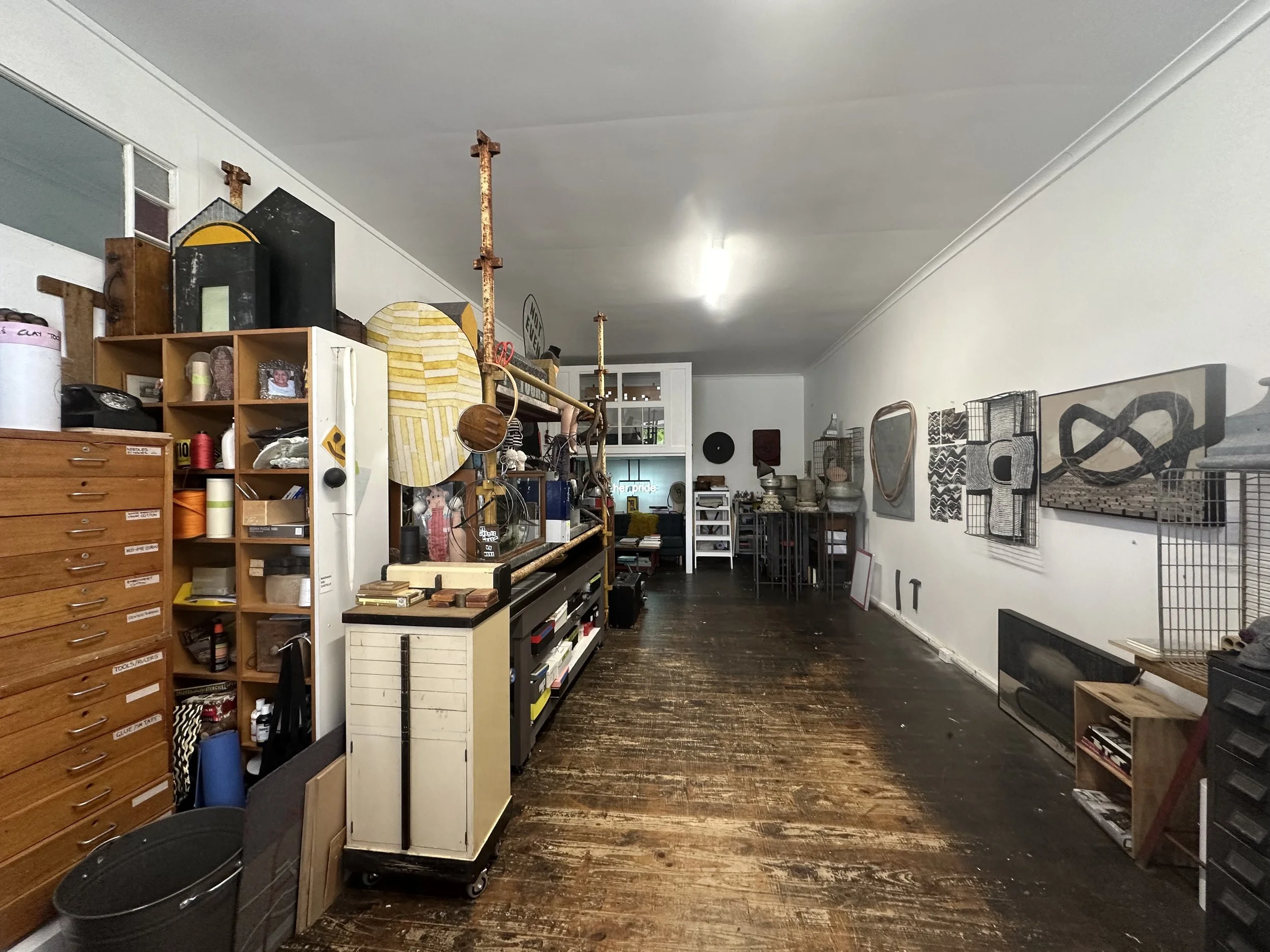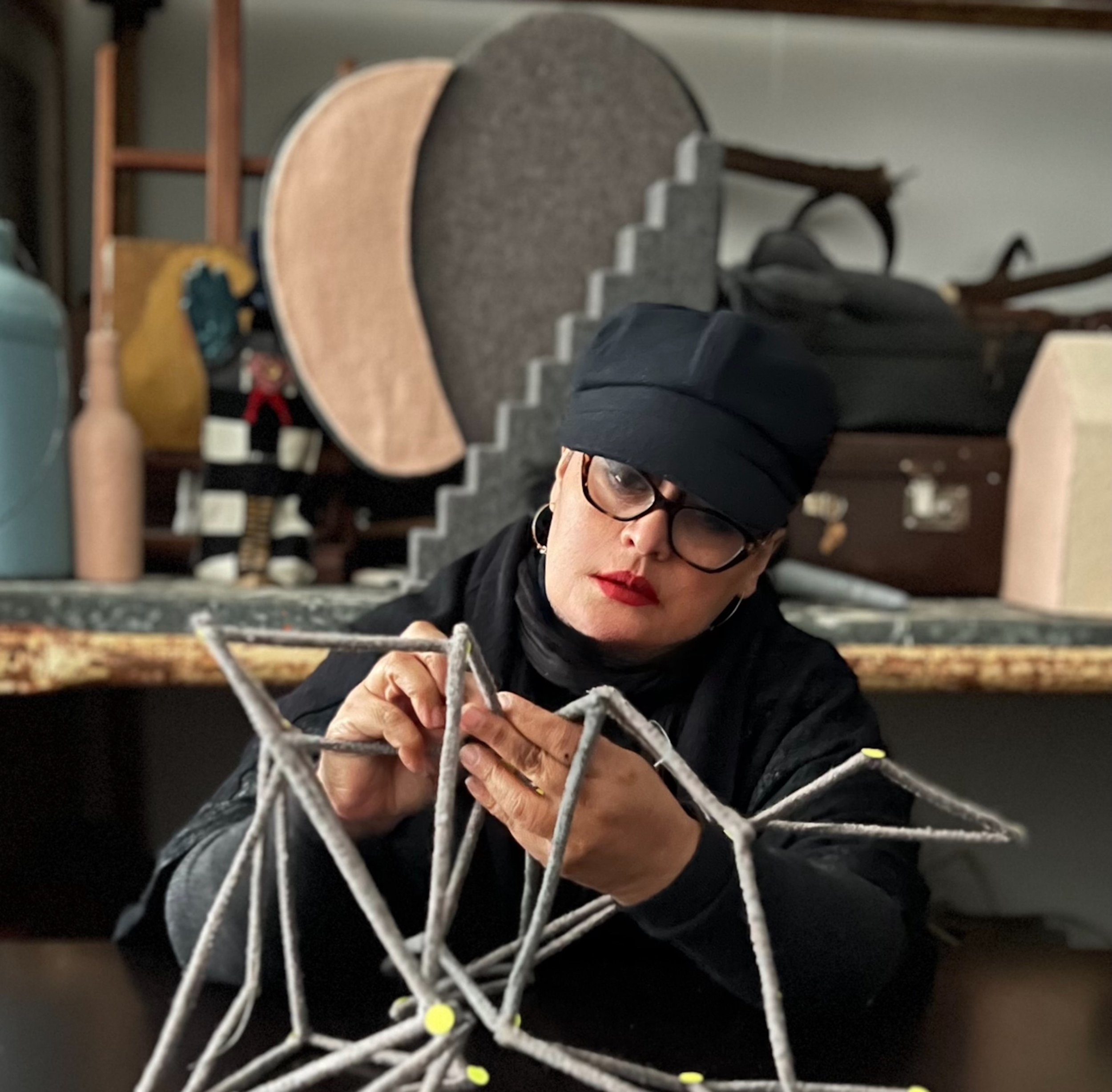Sorrow & Hope in Sculpture: The winning artwork of Deakin’s Small Sculpture Award
Mariana del Castillo was recently selected as the winner of the 2025 Deakin University Small Sculpture Award from a record number of 735 entries, receiving both the title and a $15,000 prize.
Her award-winning sculpture State of Change is on display until 10 October, alongside forty-one other finalists, at the Deakin University Art Gallery on the Melbourne Burwood campus.
Mariana Del Castillo, ‘State of Change’,
recycled Australian hardwood, monoprint on linen, clay paint, wool and cotton hand stitching, 28 x 11 x 14cm.
The piece was evaluated by a judging panel which consisted of: Deakin University Art Gallery Senior Manager Leanne Willis, arts educator and collector Professor Emeritus Barbara van Ernst, and sculptor Dan Wollmering. The panel deemed Castillo’s sculpture: “humble yet compelling and intriguing.”
The piece emerged from a journey to the Winton Wetlands on Yorta Yorta Country. “This stark landscape affected me deeply,” Castillo shares with us.
“Visiting the Winton Wetlands on Yorta Yorta Country was an opportunity to see one of the largest regeneration projects in Australia. The Yorta Yorta people’s wetlands were historically damaged by the construction of Lake Mokoan in the 1960s, which flooded and killed approximately 200,000 River Red Gums.”
“There was an underlying sadness to the bleached limbs stretching out across the flooded landscape. Ultimately, there was a hope for the regeneration of this iconic space.”
Winton Wetlands, Yorta Yorta Country
The judging panel noted the balance of fragility and strength in Castillo’s sculpture, “Evoking the fragility of the wetlands surface through the delicate stitching on the face, it is supported by the strong quiet power of the black, solid, anonymous head,” they said.
As people are encountering ‘State of Change’, Castillo hopes that “they can feel the emotion that is present in the work and have a cathartic moment when reflecting on the impact of the regeneration project.”
‘State of Change’
Castillo explains that creating the piece was not without challenges: firstly, finding an approach that felt true to the iconic space, then representing the landscape through human form.
She implemented a variety of techniques to create the sculpture, including hand carving, ink work, printmaking and hand stitching. The judging panel remarked that the mix of techniques “form together to create a unique yet powerful piece.”
The creation process itself was one of pleasure and peace for Castillo. She felt the carving and stitching meditative and “the random nature of monoprints” joyous. She believes “it is important to be open to this process and allow for serendipity.”
Sketches for State of Change
When initially delving into the art of sculpting, Castillo’s pieces were constructions that used found objects.
These creations took influence from the work of Louise Bourgeois, Remedios Varo and Goya.
“This process of construction has been refined over the years, but I have always felt compelled to explore a variety of mediums when creating my narratives,” says Castillo.
Mariana del Castillo’s Studio
Castillo has always known she wanted to be an artist and has never had doubts.
Alongside her studio practice, Castillo has dedicated the past twenty-five years to working in Arts for Recovery programs. This has included trauma-informed workshops with Defence Force personnel, Australian Federal Police, emergency services, migrant women, refugees, youth at risk, and vulnerable communities affected by bushfires and COVID-19.
Castillo strongly encourages, “everyone to embrace and support the arts in their communities” and urges “Governments to increase funding to the arts.”
She says, “I have seen the healing power of the Arts on the human spirit.”
Mariana del Castillo
Castillo says of receiving the esteemed Small Sculpture Award: “It certainly validates my commitment to my art practice, especially my attempts at representing the landscape using the figurative form.”
Castillo aspires to continue representing the Australian landscape. She hopes to take uninterrupted time and devote her energy solely to new works.
The substantial prize money will support her 2026 solo exhibition at the Grainger Gallery in Canberra.
Writer: Shannarra Lupardo
Editor: Elizabeth Porporis
Images courtesy of the artist

